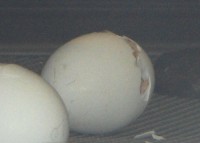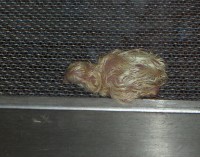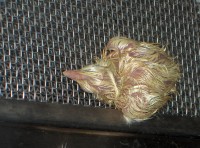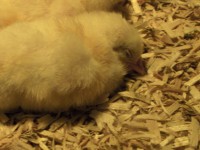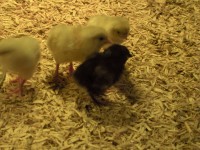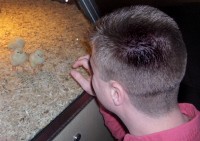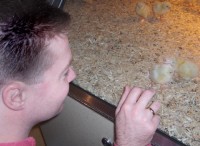While in Chicago over the weekend, my wife and I took the time to visit the Museum of Science and Industry. By the end of the afternoon I was reflecting on which exhibits made the greatest impact and something dawned on me (warning: the remainder of this article contains pictures of fuzzy baby chicks)…
Although there was a wide array of exhibits, each of different size and scope, the exhibits which made the greatest impact all had one common thread: they contained an element of live interaction. The exhibit on the top of my list must have been one of the simplest displays in the entire museum, a chick hatchery.
Although the hatchery was contained within a larger exhibit about genetics, and honestly, it was pretty dull. I didn’t learn anything not already known and the interactive components were difficult to use or broken. The real attraction was having the ability to watch chicks emerge from their shells on one side of the hatchery and seeing the day old chicks on the other side discovering life.
My wife and I spent close to an hour watching several chicks emerge from their eggs, although they were all very similar, each event was still captivating in its own way. Nevertheless, there were some critical flaws in the exhibit which prevented patrons from enjoying it as much as they could have:
- There were no staffers or docents present to answer questions.
- There were no employees around to clean the glass (kids leave the most annoying smudge marks).
- There was no way to clearly hear the chicks unless you had your ear up to a seam in the enclosure.
- The exhibit was fairly small, meaning it only took a dozen people to make viewing difficult.
- There was no information about where the chicks went after they grew to a certain size (granted, I have no illusions about that one, after all, I did eat a chicken salad sandwich for lunch supplied by the museum’s cafeteria).
Orchestras can learn from exhibits like this. Even though the museum obviously spent a considerable portion of their resources on other high-tech exhibits, the chick hatchery was still one of the most popular (based on the amount of people flocking to it that particular day). All it needed was some additional attention to detail with regard to its immediate environment and how it was presented to the public.
I could have easily done without the rest of the flashy, yet static, genetics display (which docents would have been better suited to present in a more interactive way). Instead, the museum should have focused on the core product which people obviously preferred: providing a top notch venue for watching baby chicks hatching.
Now, for your oohing and ahing pleasure, please enjoy these pictures of baby chicks:
